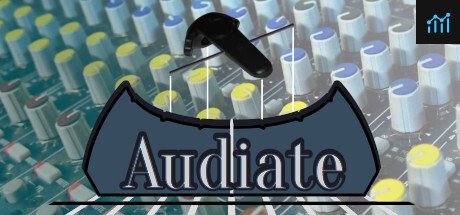Audiate System Requirements
Audiate System Requirements - full specs, system checker and the gaming PC setup you need.
| Minimum | Recommended | |
| CPU | Intel Pentium 4 2.00GHz | Unknown |
| Graphics Card | NVIDIA GeForce 6100 | Unknown |
| RAM | 256 MB | Unknown |
| File Size | 80 MB | Unknown |
| OS | Windows 7 SP1 or later | Unknown |
Can you run it? Test your computer against Audiate system requirements.
Can I Run Audiate?
You will need at least 80 MB of free disk space to install Audiate. The minimum memory requirement for Audiate is 256 MB of RAM installed in your computer. An Intel Pentium 4 2.00GHz CPU is required at a minimum to run Audiate. Provided that you have at least an NVIDIA GeForce 6100 graphics card you can play the game.
Audiate will run on PC system with Windows 7 SP1 or later and upwards.
Looking for an upgrade? See our graphics card comparison and CPU compare for benchmarks. We'll help you find the best deal for the right gear to run the game.
Audiate FPS - what frame rate can you expect?
How many FPS will I get on Audiate? An FPS Monitor is the first step in understanding how the parts in your gaming PC are actually performing in real-world conditions. It's the perfect way to track Audiate FPS drops and stutters.
Download our free tool on Overwolf to count your frame rates as you play, and test how tweaks to your settings can boost FPS and increase Audiate performance. Our app is compatible with hundreds of the best PC games and available now.
